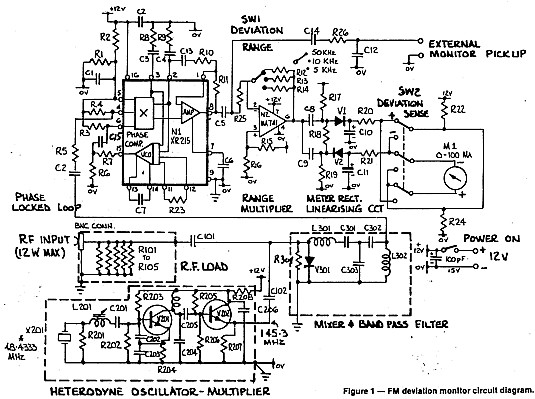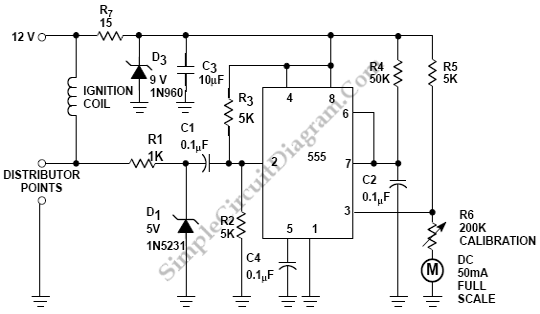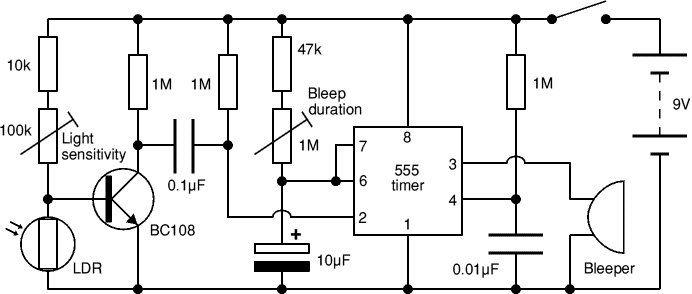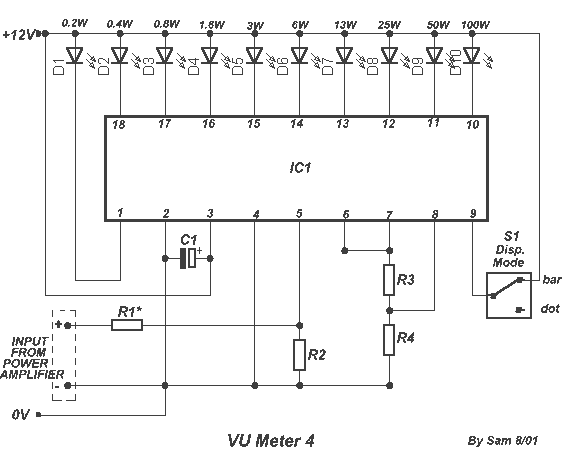
THREE RANGE LIGHT METER
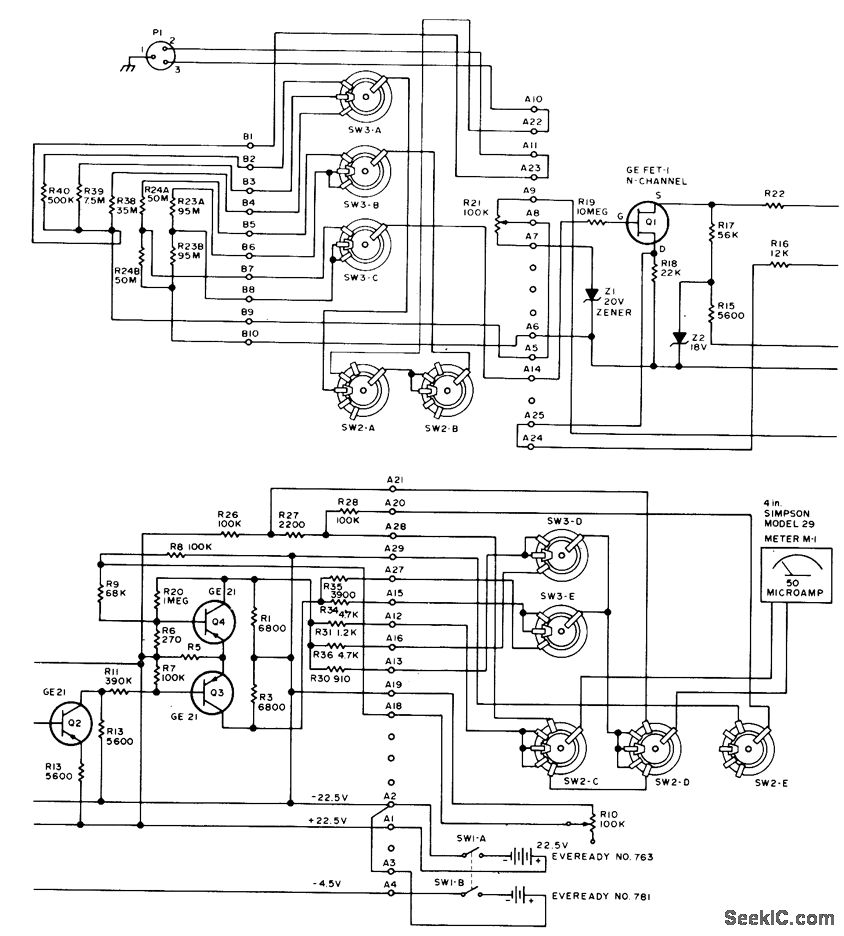
This circuit utilizes a probe that contains a Clairex 905HN light-dependent resistance element, which is connected to a DC differential amplifier. The amplifier drives a meter with a specially calibrated scale. The article outlines the calibration procedure. A switching circuit is included to continuously monitor the voltage of a 22.5-V battery. If the 4.5-V battery is low, full-scale adjustment cannot be achieved. Resistors with values specified in the article are sequentially connected to the terminals of the photocell jack P1 for calibration, allowing for a linear scale reading.
The described circuit functions as a photo exposure meter, designed to provide accurate light measurements. The Clairex 905HN light-dependent resistor (LDR) serves as the sensor, responding to varying light levels by changing its resistance. This change is detected by the DC differential amplifier, which amplifies the signal for improved readability on the meter.
The calibration procedure outlined in the article is critical for ensuring that the meter provides accurate readings across its scale. This process involves connecting specific resistors to the photocell jack P1, which allows the user to adjust the meter's response to light levels, ensuring that the readings are linear and proportional to the light intensity.
The inclusion of a switching circuit to monitor the 22.5-V battery is an essential feature, as it ensures that the circuit remains functional and accurate. If the 4.5-V battery, which may be used for other components, is low, the circuit will not be able to achieve a full-scale adjustment, potentially leading to inaccurate readings. Therefore, maintaining the battery voltage is crucial for the reliability of the meter.
In summary, this electronic schematic is designed for accurate light measurement, with a focus on calibration and battery monitoring. The integration of the Clairex 905HN light-dependent resistance element with a DC differential amplifier and a calibrated meter provides a robust solution for photo exposure measurement, making it suitable for various applications in photography and lighting analysis.Uses probe containing Clairex 905HN light-dependent resistance element, connected to DC differential amplifier driving meter having specially calibrated scale. Article gives calibration procedure. Switching circuit provides constant check on voltage of 22. 5-V battery. If 4. 5-V battery is low full-scale adjustment cannot be made Resistors having values specified in article are connected in turn to terminals of photocell jack P1 for calibration that gives linear scale reading. -J. L. Mills, Jr. , Light Right Do-It-Yourself Photo Exposure Meter, 73 Magazine, Sept. 1978, p 204 206 and 208-211. 🔗 External reference
The described circuit functions as a photo exposure meter, designed to provide accurate light measurements. The Clairex 905HN light-dependent resistor (LDR) serves as the sensor, responding to varying light levels by changing its resistance. This change is detected by the DC differential amplifier, which amplifies the signal for improved readability on the meter.
The calibration procedure outlined in the article is critical for ensuring that the meter provides accurate readings across its scale. This process involves connecting specific resistors to the photocell jack P1, which allows the user to adjust the meter's response to light levels, ensuring that the readings are linear and proportional to the light intensity.
The inclusion of a switching circuit to monitor the 22.5-V battery is an essential feature, as it ensures that the circuit remains functional and accurate. If the 4.5-V battery, which may be used for other components, is low, the circuit will not be able to achieve a full-scale adjustment, potentially leading to inaccurate readings. Therefore, maintaining the battery voltage is crucial for the reliability of the meter.
In summary, this electronic schematic is designed for accurate light measurement, with a focus on calibration and battery monitoring. The integration of the Clairex 905HN light-dependent resistance element with a DC differential amplifier and a calibrated meter provides a robust solution for photo exposure measurement, making it suitable for various applications in photography and lighting analysis.Uses probe containing Clairex 905HN light-dependent resistance element, connected to DC differential amplifier driving meter having specially calibrated scale. Article gives calibration procedure. Switching circuit provides constant check on voltage of 22. 5-V battery. If 4. 5-V battery is low full-scale adjustment cannot be made Resistors having values specified in article are connected in turn to terminals of photocell jack P1 for calibration that gives linear scale reading. -J. L. Mills, Jr. , Light Right Do-It-Yourself Photo Exposure Meter, 73 Magazine, Sept. 1978, p 204 206 and 208-211. 🔗 External reference
